CJ McCollum's Sports Injuries
Type of Sport: Basketball
CJ McCollum's Sports Injuries Table
| Type | Area | Date | Consequences | Content | How It Happened | Recovery Duration | Rehabilitation Details | Impact On Career | Psychological Impact | Previous Injuries | Return To Competition | Severity | Treatment | Medical Staff | Long Term Impact | Preventive Measures | Competition Missed | Initial Symptoms | Re Injury Risk | Support System | Rehabilitation Location |
|---|---|---|---|---|---|---|---|---|---|---|---|---|---|---|---|---|---|---|---|---|---|
| Back Injuries | lower back | 2020-12-22 | Missed a few games to recover. | McCollum suffered from lower back spasms, which were treated with rest and physical therapy. The injury was a result of a collision during a game. | During a game against the Denver Nuggets, McCollum experienced severe back spasms after a collision. | 1-2 weeks | Rest, physical therapy, and muscle relaxants. | Minimal impact, missed only a few games. | Concern about recurring back issues. | None reported on the lower back. | Returned to full activity after recovery. | Mild | Rest, physical therapy, and medication. | Team medical staff and a back specialist. | No significant long-term impact reported. | Core strengthening exercises and proper warm-up routines. | Missed 2 regular-season games. | Severe pain and muscle spasms in the lower back. | Moderate | Family, teammates, and coaching staff. | Team facilities and a specialized back rehabilitation center. |
| Fractures | left foot | 2019-01-15 | Missed several games, had to wear a walking boot. | McCollum suffered a left foot fracture which required him to be sidelined for a significant period. The fracture was confirmed through an MRI scan. | During a game against the Dallas Mavericks, McCollum landed awkwardly after a jump shot. | 6-8 weeks | Physical therapy, gradual return to weight-bearing activities, and strength training. | Missed critical games during the season which impacted team performance. | Frustration and anxiety about returning to form and maintaining performance levels. | None reported on the left foot. | Gradual, returned with limited minutes initially. | Moderate | Immobilization with a walking boot, followed by physical therapy. | Team physicians and a specialist in sports injuries. | No significant long-term impact reported. | Strengthening exercises for the foot and ankle, proper footwear. | Missed 10 regular-season games. | Pain and swelling in the left foot. | Moderate | Family, teammates, and coaching staff. | Team facilities and a specialized sports rehabilitation center. |
| Knee Injuries | left knee | 2019-03-15 | Diagnosed with a popliteus strain, missed several games. | McCollum suffered a left knee injury, specifically a popliteus strain. An MRI confirmed the extent of the injury. | In a game against the San Antonio Spurs, McCollum landed awkwardly after a drive to the basket. | 2-3 weeks | Rest, ice, compression, elevation (RICE), and physical therapy focusing on knee stability. | Missed important late-season games, affecting playoff positioning. | Concern about knee stability and future performance. | None reported on the left knee. | Full recovery, returned to regular minutes. | Mild | RICE, physical therapy, and anti-inflammatory medications. | Team medical staff and a knee specialist. | No significant long-term impact reported. | Knee strengthening exercises and proper warm-up routines. | Missed 5 regular-season games. | Pain and instability in the left knee. | Low | Family, teammates, and coaching staff. | Team facilities and a specialized knee rehabilitation center. |
CJ McCollum's Sports Injuries Videos
CJ McCollum Has a Collapsed Lung - Doctor Explains Rare Injury
CJ McCollum is out indefinitely after a CT scan revealed a pneumothorax. In this video, Dr. Brian Suter explains what a pneumothorax is. A pneumothorax, often described as a collapsed lung, is the presence of abnormal air in the chest cavity, specifically in the pleural cavity where the lung sits. Normally, the lungs expand and contract with the chest. The visceral pleura covers the lung tissue, and the parietal pleura lines the chest cavity. There shouldn't be air in this space, but it can occur due to various reasons, such as a rib injury, causing pressure that compresses the lung, making it appear collapsed.
There are two types of pneumothoraxes: simple and tension. A simple pneumothorax involves some air in the pleural space without continuous accumulation. A tension pneumothorax is more severe, with air building up and causing significant pressure, which can compress nearby structures like the heart, making it life-threatening and requiring emergency treatment.
In McCollum's case, a rib contusion led to a CT scan revealing the pneumothorax. The fact that it required a CT scan to detect might indicate it isn't severe. Treatment varies from observation to inserting a chest tube to relieve pressure. Recovery time is variable, but the average is around six and a half games missed. Typically, the body reabsorbs the air, and the defect causing the pneumothorax heals without long-term issues.
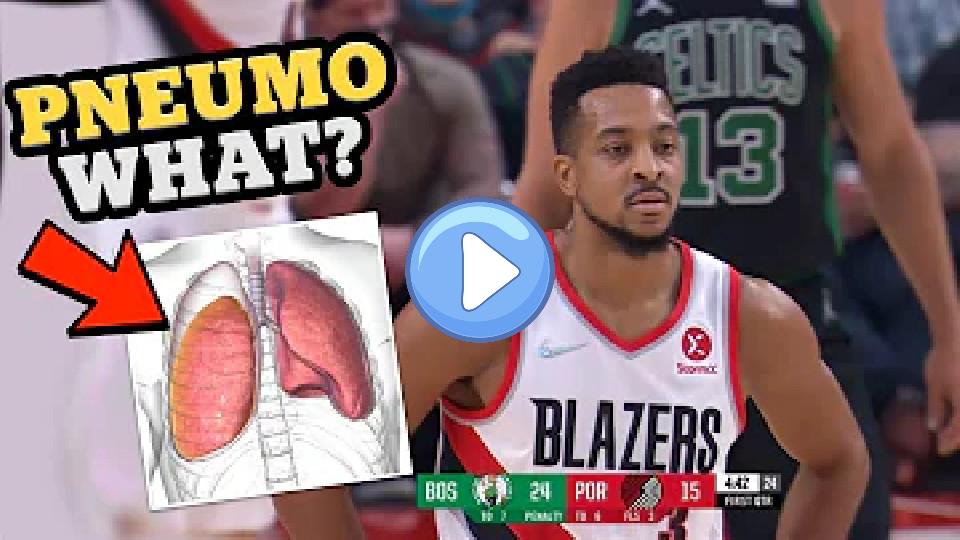
CJ McCollum Injury | Popliteus Strain Explained by Doctor
Yesterday evening against the San Antonio Spurs, CJ McCollum of the Portland Trail Blazers suffered a left leg injury. Initially, it was unclear what had happened, but an MRI has since diagnosed him with a popliteus strain in his left knee. The popliteus is a small muscle in the knee that helps with its biomechanical function, particularly in unlocking the knee to allow it to bend. The muscle's injury is uncommon and can be associated with other structures in the knee, such as the lateral collateral ligament (LCL) and the meniscus. Recovery will focus on resting the knee and gradually regaining strength and stability. McCollum's condition will be reevaluated in about a week to determine the next steps, but this injury does not necessarily rule him out for the season or postseason.

CJ McCollum Leg Injury - Blazers vs. Spurs | March 16, 2019 | 2018-19 NBA Season
CJ McCollum drives into the lane, has his shot blocked by Jakob Pöltl, and lands awkwardly, tangling with Pöltl's legs. McCollum falls and holds his left knee in considerable pain. He eventually walks off with assistance, putting weight on his legs, which is a positive sign.
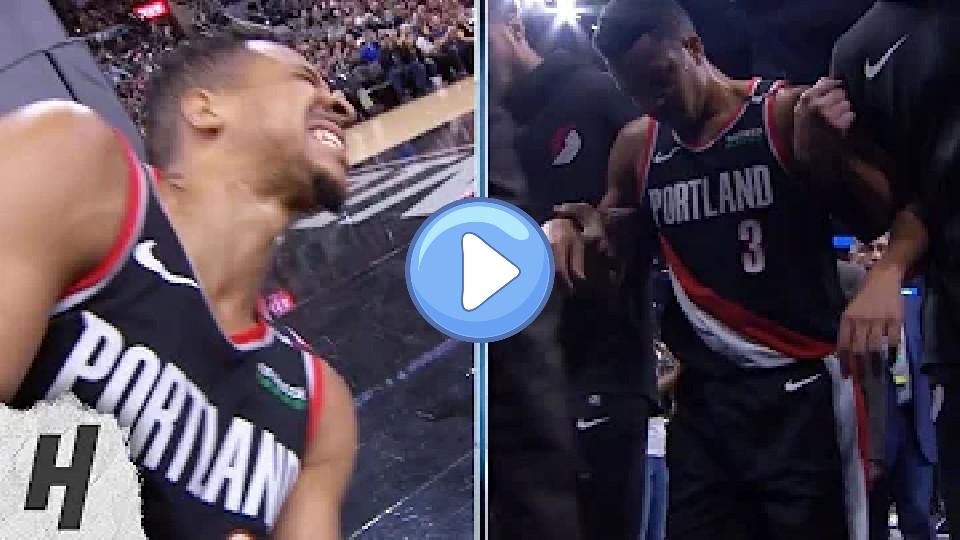
CJ McCollum's Isolation Scoring 🤯
The video showcases CJ McCollum's impressive isolation plays in the NBA, highlighting his versatility and skill on the court. McCollum demonstrates a range of moves, including double clutches, step-back threes, crossovers, and creative shots under pressure. The clips emphasize his ability to perform in high-stakes moments, particularly during playoff scenarios. His agility and control on the court are apparent as he navigates tough defenses and creates scoring opportunities. The video captures McCollum's dynamic playing style, making him a formidable player in isolation situations.
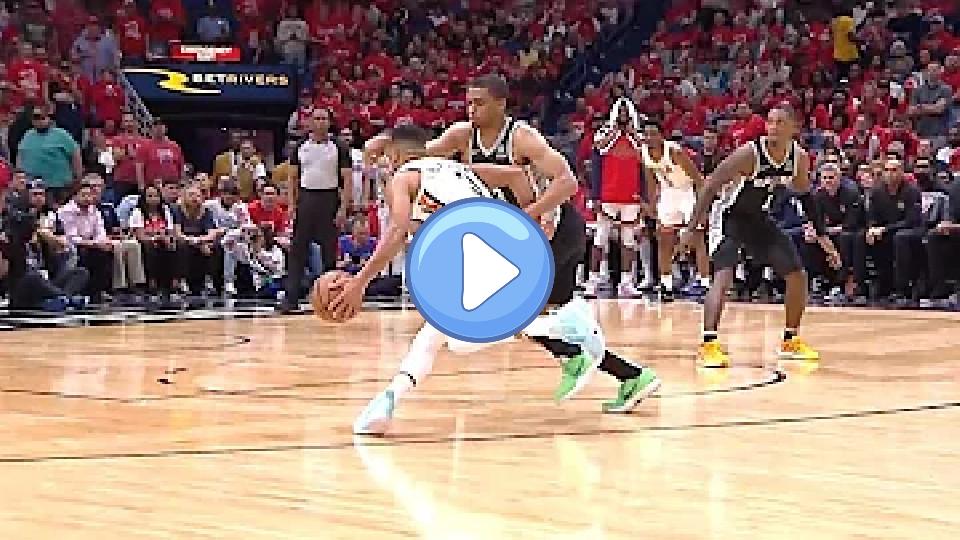
Donte DiVincenzo has something to say to CJ McCollum after a hard flagrant 1 foul.
In a heated game critical for playoff standings, CJ McCullum received a flagrant foul for pushing off during a play. The intensity was high, with earlier tensions between Draymond Green and Brandon Ingram, and the game was marked by fiery possessions as both teams vied to improve their playoff position.
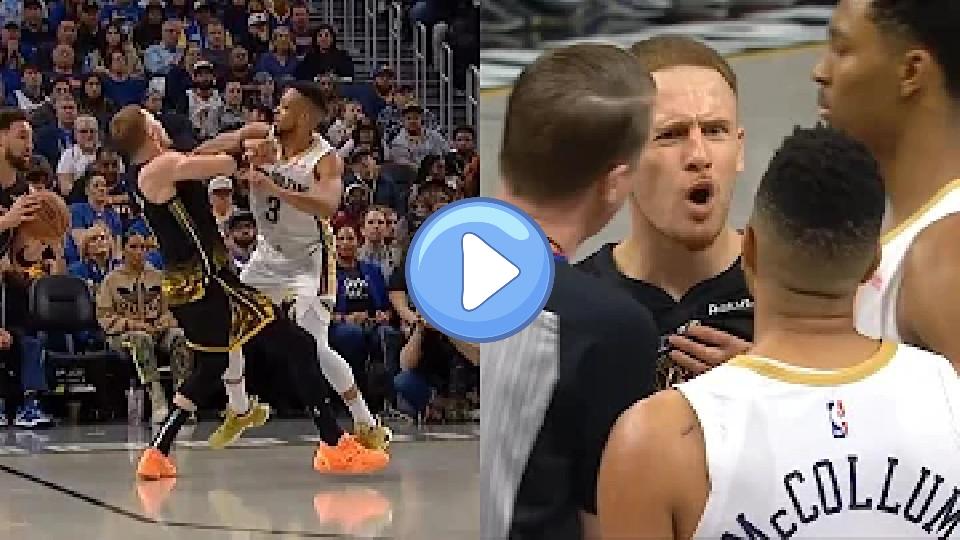
CJ McCollum Leaves Game With Severe Knee Injury | Trail Blazers vs. Spurs | 3.16.2019
CJ McCollum suffered a knee injury during a Portland Trail Blazers game. Despite the injury, it was a positive sign that he was able to walk with assistance.

CJ McCollum and Alex Len got into a shoving match.
CJ and Alex Len had to be separated after a scuffle broke out in Portland. Subscribe: ...
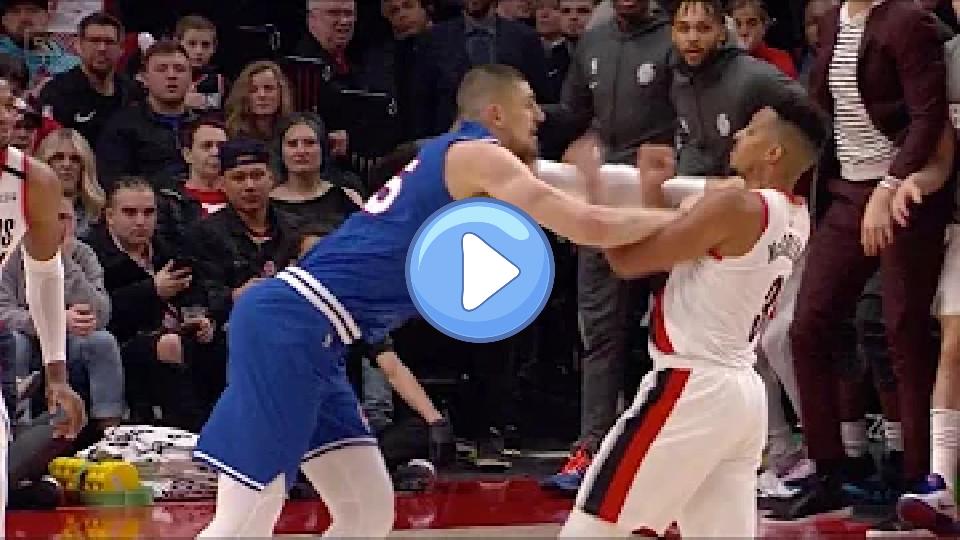
Terrance Ferguson receives a technical foul after trash-talking with CJ McCollum | Blazers vs. Thunder
The video discusses the career of an NBA coach who has been with the Blazers for 11 years and previously won a title as an assistant with the Mavericks in 2011. During a game, tensions rise on the floor, resulting in double technical fouls being issued to Ferguson and McCollum. Russell Westbrook is noted for playing the role of peacemaker in the situation.
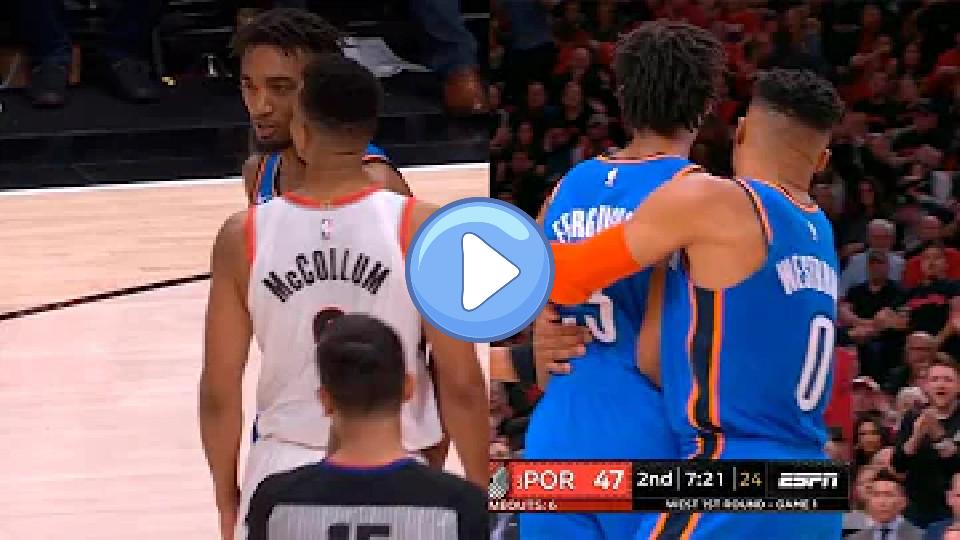
CJ McCollum leaves Spurs game with a left leg injury | Blazers vs. Spurs
#NBA #HNBTV ➙ FIND HNB PODCAST HERE: https://soundcloud.com/hoopsnbrews ➙ FOLLOW US ON TWITTER: ...

